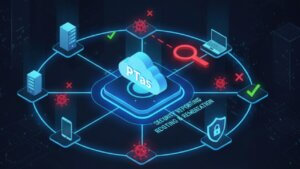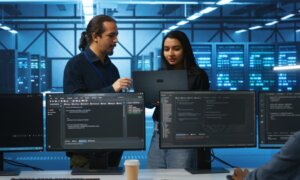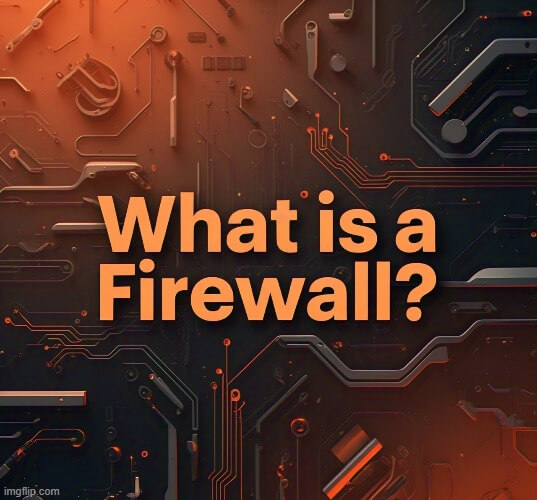Software firewalls play a crucial role in protecting personal and enterprise networks. Unlike hardware firewalls that operate at the network perimeter, software firewalls are installed on individual devices to monitor and filter incoming and outgoing traffic. They provide an additional layer of security that complements traditional hardware-based solutions.
What is a Software Firewall?
A software firewall is a security application installed on a computer or server that monitors and controls network traffic based on predefined security rules. These firewalls operate at different layers of the OSI model, primarily at the transport and application layers, providing granular control over network connections.
How Software Firewalls Work
Software firewalls use rule-based filtering to inspect data packets entering and leaving a device. They analyze packet headers, application behaviors, and IP addresses to allow or block traffic. Additionally, some advanced software firewalls incorporate AI-driven threat detection, behavioral analytics, and deep packet inspection (DPI) to enhance security.
Benefits of Using Software Firewalls
Granular Control: Allows users to customize security rules per application or network connection.
Ease of Deployment: No additional hardware is required, making it simple to install and configure.
Cost-Effective: More affordable than hardware firewalls, with many free or low-cost options available.
Protection from Internal Threats: Secures individual endpoints against malware, ransomware, and unauthorized access.
Flexibility: Can be used across various devices, including Windows, macOS, and Linux systems.
Types of Software Firewalls
1. Host-Based Firewalls
Host-based firewalls are installed on individual computers or servers to protect them from threats. They are widely used in personal computers, workstations, and cloud servers.
2. Application Firewalls
These firewalls monitor and control traffic at the application level, preventing unauthorized programs from accessing the internet. They are commonly used to stop malware and spyware from communicating with external servers.
3. Cloud-Based Firewalls
Cloud-based firewalls, also known as Firewall-as-a-Service (FWaaS), provide security at a network-wide level while being managed remotely. They are ideal for enterprises with distributed teams and cloud-based infrastructure.
Top Software Firewalls for 2025
1. Windows Defender Firewall
Platform: Windows
Features: Integrated into Windows OS, real-time threat monitoring, automatic updates
Best For: Home users and small businesses
2. Norton Firewall
Platform: Windows, macOS
Features: AI-driven threat detection, phishing protection, identity theft prevention
Best For: Households and small enterprises
3. ZoneAlarm Firewall
Platform: Windows
Features: Two-way firewall, antivirus integration, public Wi-Fi security
Best For: Personal use and remote workers
4. Comodo Firewall
Platform: Windows
Features: Sandboxing technology, intrusion prevention, real-time traffic monitoring
Best For: Advanced users and small businesses
5. GlassWire
Platform: Windows
Features: Bandwidth monitoring, real-time alerts, easy-to-use interface
Best For: Network monitoring and home users
Software Firewalls vs. Hardware Firewalls
| Feature | Software Firewall | Hardware Firewall |
|---|---|---|
| Installation | Installed on a device | Requires dedicated hardware |
| Cost | Lower cost or free | Higher upfront cost |
| Protection Scope | Individual device | Entire network |
| Customization | Highly customizable | Less flexible |
| Scalability | Limited to host machine | Scalable for large networks |
Common Challenges with Software Firewalls
Performance Impact: Consumes system resources, potentially slowing down a device.
Configuration Complexity: Requires technical knowledge to optimize security settings.
Limited Network-Wide Protection: Protects only the device it’s installed on, unlike hardware firewalls that secure entire networks.
Best Practices for Configuring a Software Firewall
Enable Default Security Rules: Start with predefined settings and adjust as needed.
Regular Updates: Keep firewall software updated to protect against emerging threats.
Application Control: Restrict applications from accessing the internet unless necessary.
Monitor Logs: Regularly review firewall logs to detect unusual activity.
Use Alongside Antivirus Software: Combine firewall protection with an antivirus for comprehensive security.
Conclusion
Software firewalls are an essential component of cybersecurity, offering cost-effective and flexible protection for individual devices. Whether you’re a home user or managing a business network, selecting the right software firewall can significantly enhance your security posture. By understanding the types, benefits, and limitations of software firewalls, users can implement effective measures to safeguard their digital assets in 2025 and beyond.
References
Why Businesses Trust SecureMyOrg For Comprehensive Network Security
At SecureMyOrg, we uncover and fix all possible security vulnerabilities of mobile and web, while providing solutions to mitigate risks. We are trusted by renowned companies like Yahoo, Gojek and Rippling, and with 100% client satisfaction, you’re in safe hands!







Some of the things people reach out to us for –
- Building their cybersecurity program from scratch – setting up cloud security using cost-effective tools, SIEM for alert monitoring, building policies for the company
- Vulnerability Assessment and Penetration Testing ( VAPT ) – We have certified professionals, with certifications like OSCP, CREST – CPSA & CRT, CKA and CKS
- DevSecOps consulting
- Red Teaming activity
- Regular security audits, before product release
- Full time security engineers.
Relevant Posts

AI-Powered Phishing Emails: 7 Ways to Spot and Stop Them Before They Strike
Penetration testing as a service (PTaaS) lets experts simulate real attacks to uncover vulnerabilities before hackers do. This guide explains the process, benefits, and costs, helping businesses strengthen defenses with predictable, ongoing security checks.

Why Regular Penetration Testing is Essential for Modern Companies
Penetration testing as a service (PTaaS) lets experts simulate real attacks to uncover vulnerabilities before hackers do. This guide explains the process, benefits, and costs, helping businesses strengthen defenses with predictable, ongoing security checks.

What Is Penetration Testing as a Service?
Penetration testing as a service (PTaaS) lets experts simulate real attacks to uncover vulnerabilities before hackers do. This guide explains the process, benefits, and costs, helping businesses strengthen defenses with predictable, ongoing security checks.

How To Inspect Encrypted Traffic Without Breaking Privacy
Network administrators face a challenge: securing systems while respecting privacy. This guide explains how to inspect encrypted traffic without breaking privacy using metadata, anomaly detection, and machine learning ensuring visibility, compliance, and trust.

How to Audit Infrastructure as Code (IaC) for Security Vulnerabilities
Discover how to audit Infrastructure as Code (IaC) for security vulnerabilities with this practical guide. Learn to scan IaC files using tools like Checkov, fix issues like exposed resources, and integrate audits into CI/CD pipelines. Protect your cloud systems from misconfigurations and ensure compliance with clear, actionable steps.

DevSecOps Best Practices: Integrating Security Early in Your CI/CD Pipeline
This article provides a practical guide to embedding security into every stage of your CI/CD pipeline. Learn core DevSecOps best practices like SAST, DAST, dependency scanning, secrets management, and compliance automation to catch vulnerabilities early, foster a culture of shared ownership, and build a secure-by-design development process that accelerates release cycles.

